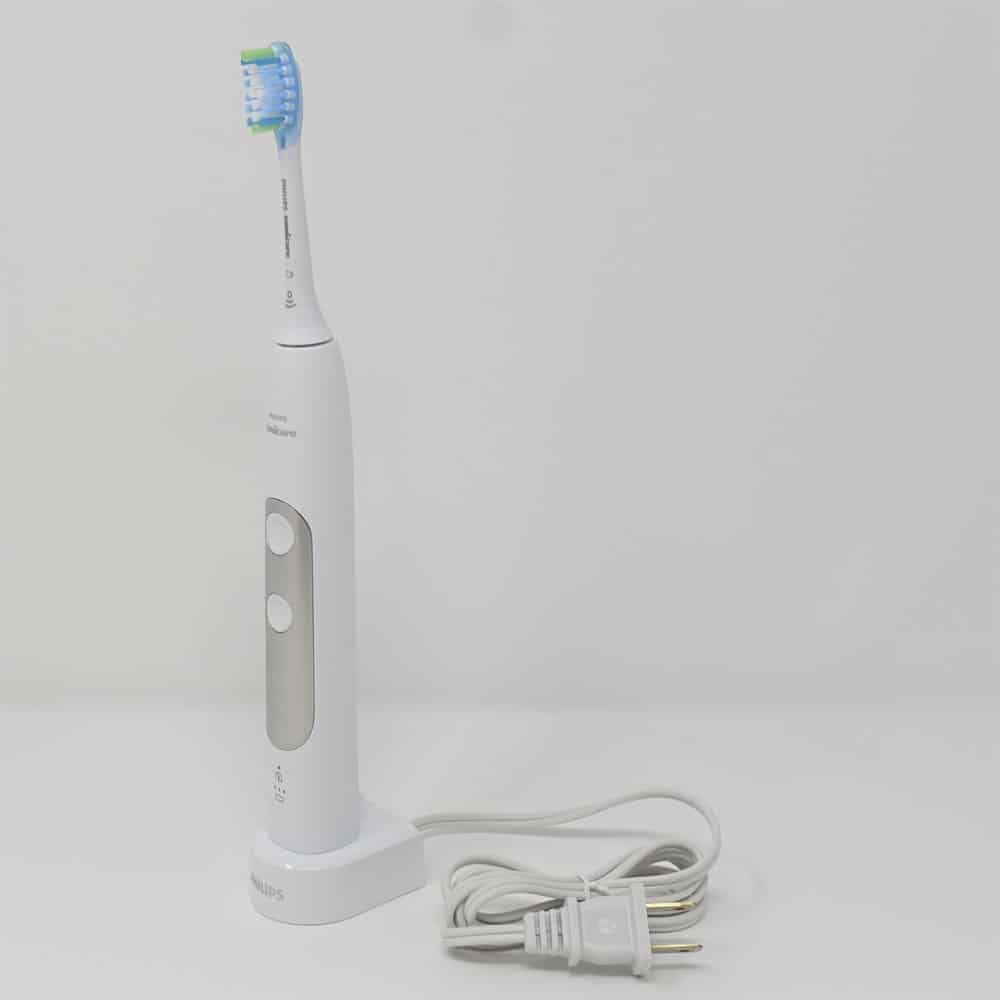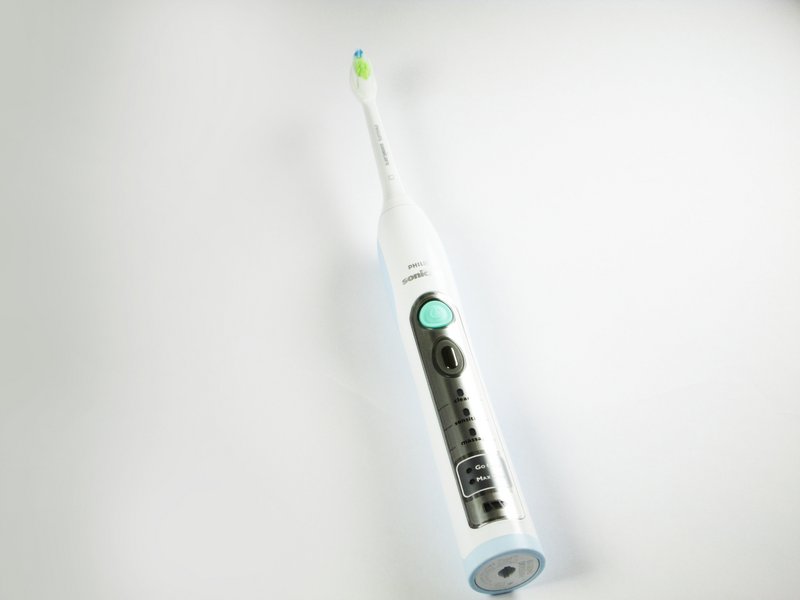To troubleshoot a Sonicare toothbrush, check for damaged electronics, water damage, discharged battery, and faulty components. You can also fix issues like rattling noises or loose brush heads by disassembling and reassembling the toothbrush.
If the toothbrush stops vibrating, try resetting it or replacing the battery if it no longer charges. Sonicare toothbrushes typically last between three to five years before needing replacement. If your toothbrush is not working correctly, seek troubleshooting help from the manufacturer for solutions and warranty exchanges.
Remember to press the metal button with a screwdriver to reset the toothbrush if it won’t turn on.

Credit: www.electricteeth.com
Contents
Identifying Common Issues
To troubleshoot common issues with your Sonicare toothbrush, you can follow simple steps to diagnose and fix problems such as damaged electronics, water damage, discharged battery, damaged toothbrush head, or toothpaste residue. By identifying these issues, you can extend the life of your toothbrush and ensure optimal performance.
Identifying Common IssuesPhilips Sonicare toothbrushes are considered to be some of the best electric toothbrushes on the market. However, like any other electronic device, they can sometimes experience issues. If you’re having problems with your Sonicare toothbrush, it’s important to identify the issue before attempting to fix it. Here are some common issues you may encounter and how to troubleshoot them.Toothbrush Won’t Turn OnIf your Sonicare toothbrush won’t turn on, there are a few things you can try. First, make sure it’s charged. If the battery is dead, the toothbrush won’t turn on. If it still won’t turn on, try resetting it. To do this, remove the brush head and hold down the power button for 5-10 seconds. If the toothbrush still won’t turn on, it may be a battery issue and you may need to replace it.Excessive Noise During OperationIf you’re experiencing excessive noise during operation, there could be a few causes. The first thing to check is the brush head. Make sure it’s properly attached and not loose. If the brush head is secure, try cleaning it. Sometimes buildup can cause excessive noise. If that doesn’t work, it could be an issue with the motor. In that case, you may need to replace the toothbrush.In conclusion, identifying common issues with your Sonicare toothbrush is essential before attempting to fix it. By following these troubleshooting steps, you can save yourself time and money and have your toothbrush working like new again.
Credit: www.ifixit.com
Initial Troubleshooting Steps
When encountering issues with your Sonicare toothbrush, there are some initial troubleshooting steps you can take to resolve common problems before seeking professional assistance.
Checking The Charger Functionality
To ensure your Sonicare toothbrush is receiving power, check the functionality of the charger by following these steps:
- Verify the charger is plugged into a working power outlet.
- Inspect the charger cord for any visible damage.
- Connect the toothbrush to the charger and look for LED indicator lights to confirm charging status.
Resetting The Toothbrush
If your Sonicare toothbrush is still not functioning properly, you can try resetting it by following these steps:
- Locate the reset button on the toothbrush handle.
- Press and hold the reset button for at least 10 seconds.
- Release the button and wait for the toothbrush to restart.
Handling Charging Problems
When it comes to maintaining your Sonicare toothbrush, addressing charging issues is crucial for ensuring consistent performance. Here are some troubleshooting tips to help you handle charging problems effectively.
Assessing Charger Connectivity
If your Sonicare toothbrush is not charging, the first step is to check the charger connectivity. Ensure that the charger is properly plugged into a functioning power outlet and that the toothbrush is correctly placed on the charger. Additionally, inspect the charging base and the toothbrush handle for any visible damage or debris that may be obstructing the connection.
Battery Maintenance Tips
Proper battery maintenance can contribute to the longevity of your Sonicare toothbrush. Avoid overcharging the toothbrush, as this can lead to decreased battery efficiency over time. It is also advisable to fully deplete the battery before recharging it to maximize its lifespan. Furthermore, keep the charging contacts on the toothbrush handle and the charger clean and free from any buildup that may interfere with the charging process.
Fixing Vibration Issues
If you are experiencing vibration issues with your Sonicare toothbrush, don’t worry, as there are troubleshooting steps you can take to address the problem. Weak or irregular vibrations and a non-vibrating toothbrush are common issues that users encounter. Let’s explore the steps you can take to troubleshoot and repair these vibration issues.
Troubleshooting Weak Or Irregular Vibrations
If your Sonicare toothbrush is exhibiting weak or irregular vibrations, there are several troubleshooting steps you can take to address the issue:
- Check the battery level and ensure it is fully charged.
- Inspect the brush head for any obstructions or buildup that may be affecting the vibration.
- Reset the toothbrush by removing the brush head and pressing the power button for 5 seconds.
- Ensure the brush head is securely attached to the handle.
Repairing A Non-vibrating Toothbrush
If your Sonicare toothbrush is not vibrating at all, there are a few repair steps you can take to resolve the issue:
- Check the battery and charger to ensure they are functioning properly.
- Inspect the internal components for any signs of damage or corrosion.
- Clean the contact points between the handle and the brush head to ensure a secure connection.
- If the issue persists, consider contacting Sonicare customer support for further assistance.
Dealing With Water Damage
Water damage can be a common issue with Sonicare toothbrushes, especially if proper preventive measures are not taken. Addressing water intrusion is essential to ensure the longevity and functionality of your toothbrush.
Preventive Measures
Implementing preventive measures can significantly reduce the risk of water damage to your Sonicare toothbrush. Here are some steps to consider:
- Ensure the rubber seal around the battery compartment is intact and free from damage.
- Avoid submerging the toothbrush in water and ensure it is not exposed to excessive moisture.
- Regularly inspect the handle for any cracks or openings that may allow water to seep in.
- Properly secure the charging port cover to prevent water from entering the internal components.
Addressing Water Intrusion
If your Sonicare toothbrush has been exposed to water and you suspect water intrusion, here are the steps to address the issue:
- Immediately remove the brush head and wipe the handle with a dry cloth.
- Leave the handle to air dry in a well-ventilated area for at least 24 hours.
- Avoid using the toothbrush until you are certain that all moisture has evaporated.
- If the toothbrush continues to exhibit signs of water damage, contact Sonicare customer support for further assistance.

Credit: www.youtube.com
Mechanical Fixes
When it comes to troubleshooting your Sonicare toothbrush, some issues may require mechanical fixes. Here are some common mechanical problems you might encounter and how to address them.
Replacing A Damaged Toothbrush Head
If you notice that the bristles on your toothbrush head are worn out or damaged, it’s time to replace it. Follow these simple steps to ensure your Sonicare toothbrush continues to deliver optimal performance:
- Turn off the toothbrush and remove the old head by pulling it straight out from the handle.
- Align the new head with the metal shaft on the handle and gently push it in until it clicks into place.
- Ensure the new head is securely attached before using the toothbrush.
Repairing A Faulty Button
If you’re experiencing issues with the power button or mode selector on your Sonicare toothbrush, you can attempt to repair it before considering a replacement. Here’s how to address a faulty button:
- Inspect the button for any debris or residue that may be hindering its function.
- Gently clean around the button using a cotton swab dampened with a small amount of rubbing alcohol.
- If the button is physically damaged or unresponsive, consider reaching out to the manufacturer for further assistance.
Internal Component Inspection
Opening The Toothbrush Casing
When troubleshooting your Sonicare toothbrush, start by carefully opening the casing.
Evaluating Electronic Components
After opening the casing, proceed to evaluate the electronic components.
Long-term Maintenance And Replacement
For long-term maintenance and replacement of your Sonicare toothbrush, ensure regular cleaning and check for any loose parts or unusual vibrations. If troubleshooting fails, consider replacing worn-out components to keep your toothbrush functioning optimally. Regular upkeep can extend the lifespan of your Sonicare toothbrush.
Long-Term Maintenance and ReplacementMaintaining your Sonicare toothbrush is crucial to ensure its longevity and optimal performance. While Sonicare toothbrushes are known for their durability, some parts may wear out over time. In this section, we will discuss determining the toothbrush lifespan, signs your Sonicare needs replacing, and long-term maintenance tips.Determining Toothbrush Lifespan
On average, Sonicare toothbrushes can last between three to five years with proper care and maintenance. However, factors such as frequency of use, charging habits, and accidental damage can affect its lifespan. To determine whether it’s time to replace your Sonicare toothbrush, consider the following:- Has it been more than three years since you purchased your toothbrush?
- Is the battery life significantly shorter than before?
- Does the toothbrush head show signs of wear and tear?
- Is the toothbrush making unusual noises or vibrating less powerfully?
- Have you dropped the toothbrush or exposed it to water damage?
Signs Your Sonicare Needs Replacing
If you have noticed any of the above signs, it might be time to replace your Sonicare toothbrush. Here are some common indications that your toothbrush needs replacing:- The toothbrush is not holding a charge or not charging at all.
- The toothbrush is making a loud rattling noise or vibrating less powerfully.
- The toothbrush head is loose or not fitting securely onto the handle.
- The toothbrush head bristles are frayed or worn down.
- The toothbrush is showing signs of water damage or has been dropped.
Long-term Maintenance Tips
To prolong the life of your Sonicare toothbrush, follow these maintenance tips:- Replace the toothbrush head every three months or when bristles appear worn down.
- Store the toothbrush in a dry area and avoid leaving it in water or other liquids.
- Charge the toothbrush regularly and avoid overcharging it.
- Clean the toothbrush handle and head regularly with a damp cloth and mild soap.
- Avoid using abrasive cleaners or toothpaste on the toothbrush.
Frequently Asked Questions
How Do I Reset My Sonicare Toothbrush?
To reset your Sonicare toothbrush, press the small metal button inside the housing with a screwdriver.
Why Has My Sonicare Toothbrush Stopped Working?
If your Sonicare toothbrush has stopped working, it may be due to damaged electronics, water damage, or a discharged battery. Check for these issues and consider professional repair if needed.
What Is The Life Expectancy Of A Sonicare Toothbrush?
The life expectancy of a Sonicare toothbrush is typically between three to five years.
How Do I Know When My Sonicare Needs Replacing?
Replace your Sonicare toothbrush every three to five years for optimal performance and hygiene. Look for worn bristles and decreased effectiveness.
Conclusion
Troubleshooting your Sonicare toothbrush can save you time and money. By following simple steps, you can diagnose and fix common issues like water damage, battery problems, and loose brush heads. Keep your toothbrush in top condition for a healthier smile!

